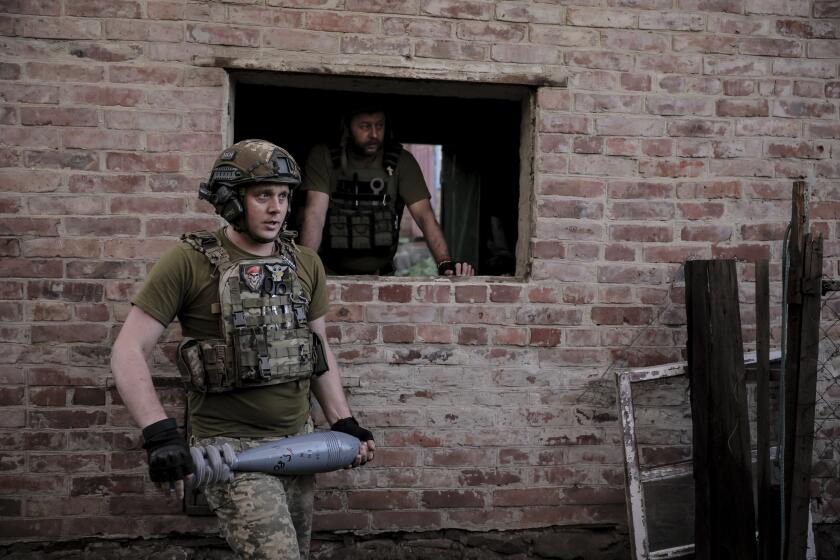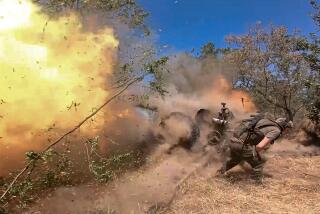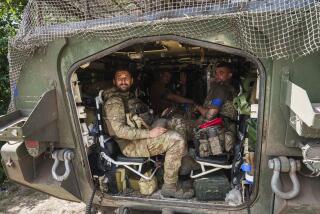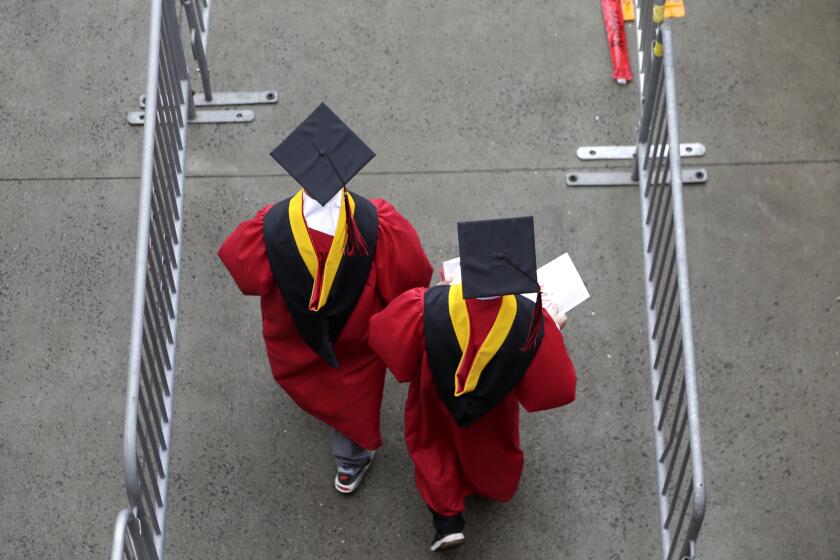Opinion: How Ukraine can press its advantage after seizing Russian territory
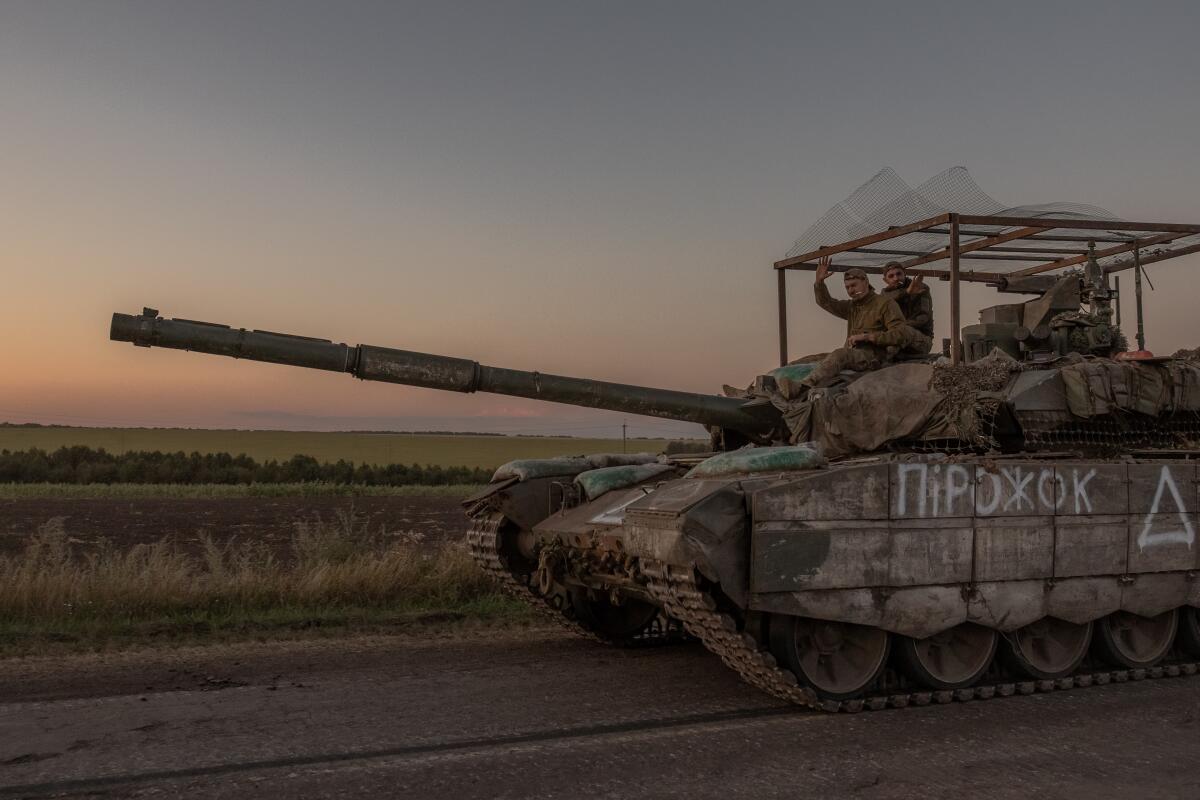
Through the summer, the mood in Ukraine was darkening. Daily air alerts. Burning and ruined power plants, hospitals, apartment blocks and shopping centers. Reports of Russia capturing yet another Ukrainian settlement. Mounting casualties. International military assistance increasingly looking like too little, too late. Breaking with his cool, steadfast optimism, a friend of mine in Ukraine lamented: “The West is cowardly. They don’t help us enough. They fear Putin too much.”
The Biden administration’s decision to allow U.S. weapons to be used for attacks within Russia has weakened the Kremlin and will rally allies.
It was not just his view. In my opinion polls in May and June with Ukraine’s National Academy of Sciences Institute of Sociology — funded by the U.S. National Science Foundation — 78% of 477 Ukrainians we tracked saw Western military aid as insufficient for Ukraine to repel Russia’s invasion — up from 65% a year ago.
Then came Aug. 6, and since then my family, friends and colleagues have started sounding cautiously upbeat.
Providing Ukraine with support and weapons is not about perpetuating the war that Russia started. It’s about stopping Vladimir Putin in the only way he understands.
That was the day Ukrainian forces crossed into Russia’s Kursk province. Seizing more territory from Russia in days than Russia seized from Ukraine in a year, Ukrainian troops cut off vital supply roads, blew up two key bridges, destroyed Russian forces heading toward Ukraine, captured an underground ammunition depot and took hundreds of Russian prisoners of war, with some entire units surrendering.
It is now Moscow, not Kyiv, asking to swap prisoners. Russian units started relocating toward this region and away from other fronts in the war, potentially easing the pressure on Ukraine’s defenses.
Can these successes give Ukraine leverage to end the war? The answer is twofold.
On one hand, Russia’s war machine is huge, its coffers are brimming with cash from energy exports, and it gets drones, missiles and shells from Iran and North Korea. While Ukraine scores in Kursk, Russia, on average, keeps firing 4,000 artillery rounds, launching 100 massive glide bombs and mounting more than 120 infantry assaults along the 600-mile front every day. Russian ground forces close in on Pokrovsk, a critical stronghold in Ukraine’s east. Putin doesn’t budge.
On the other hand, Ukraine’s push north is precisely the kind of action that stands the best chance of eventually bringing this war to an end. Critically, Ukraine has signaled to the Kremlin that it has the audacity to surprise Russia and do things Russian forces may be unable to counter. Think of Operation Ocean Venture of the 1980s: U.S. air sorties deep into Russia from carriers improbably parked in icy Norwegian fjords ultimately convinced the Soviet top brass they could not stop us. This helped end the Cold War.
It is Putin now who is on the defensive and has to guess. Where may Ukrainian forces move next, given the absence of defense lines? Can they strike the Russian forces advancing on Ukraine from the rear? Would they attempt to take over the Kursk nuclear power plant? What may they do after seizing the only hub through which Russia’s natural gas flows to Europe?
History tells us that to end the war Ukraine will need to keep surprising Russia. And Ukraine will need U.S. help. Some support is already happening: While Ukraine uses Western military gear inside Russia, the Biden administration has not publicly called on Kyiv to pull back. Showing bipartisan support, U.S. Sens. Richard Blumenthal (D-Conn.) and Lindsey Graham (R-S.C.) visited Kyiv and called Ukraine’s Kursk operation “bold and brilliant.” These are important signals to Putin that he cannot endlessly exploit U.S. fears of escalation and U.S. self-deterrence.
More will be needed. Getting Moscow to face more uncertainty is key. The obvious next move is to lift the American ban on how far inside Russia Ukraine can fire the longer-range weapons Washington and its allies have provided, while helping Ukraine stay committed to its disciplined practice of restricting strikes to military and related targets. The goal is not for Ukraine to wantonly destroy any Russian airfield or shoot down any Russian warplane as far as the Caspian Sea, but it is key that Putin realize Kyiv can and might do so.
Ukraine would also benefit if the Biden administration would endorse Graham’s idea to make it possible for retired U.S. F-16 pilots to volunteer for service in Ukraine. This would reverse the unfortunate signals we sent to Moscow when it became known not enough Ukrainian pilots were trained to fly the F-16s Kyiv received this summer.
For the Kursk venture to become a game changer, we need to help Ukraine make Putin worry harder. Are any Russian warships, air defense systems, logistical hubs, lines of supply or communication infrastructure safe? What if Washington talks to Turkey about letting U.S. naval ships enter the Black Sea? What if ships carrying North Korean missiles to Russia are blockaded?
Americans have a real opportunity now not only to help Ukraine but also to seize the deterrence initiative and make Putin think twice before harming the U.S. or our allies anywhere.
Of course, Ukraine faces multiple risks as well. But as a friend in Kyiv summed it up: “Kursk raises big uncertainties. And 90% of them are not in Russia’s favor.”
Mikhail Alexseev, a professor of international relations at San Diego State University, is the author of “Without Warning: Threat Assessment, Intelligence, and Global Struggle” and principal investigator of the War, Democracy and Society project funded by the National Science Foundation.
More to Read
A cure for the common opinion
Get thought-provoking perspectives with our weekly newsletter.
You may occasionally receive promotional content from the Los Angeles Times.
